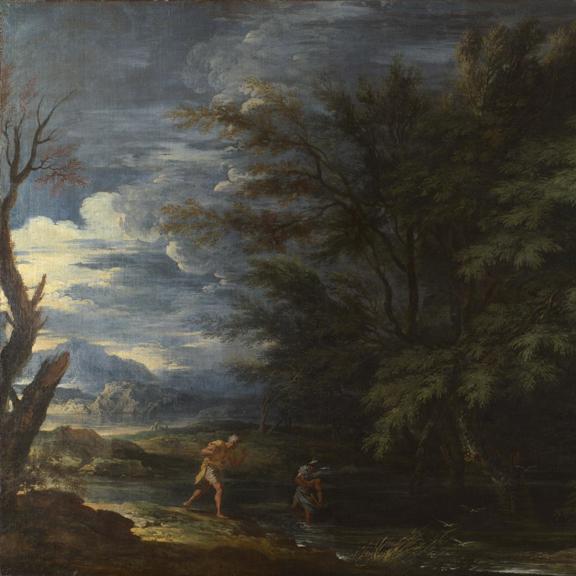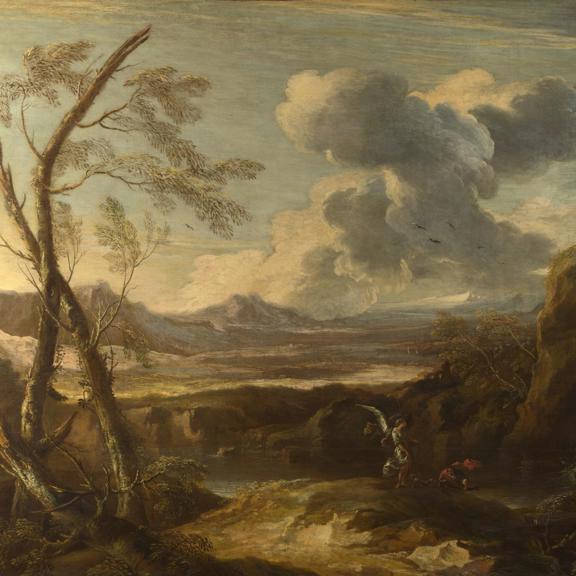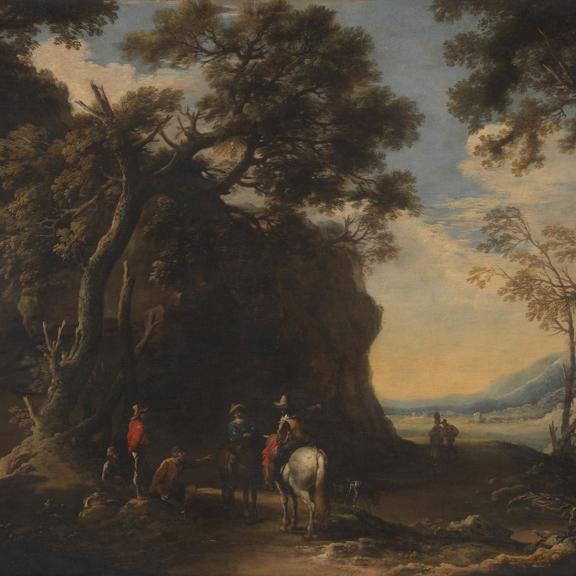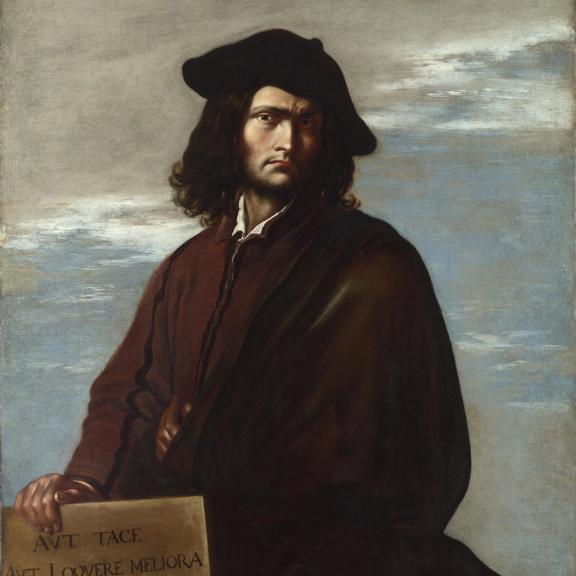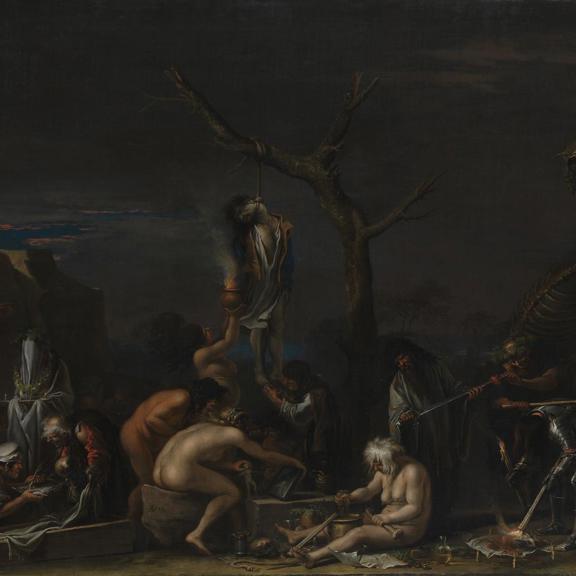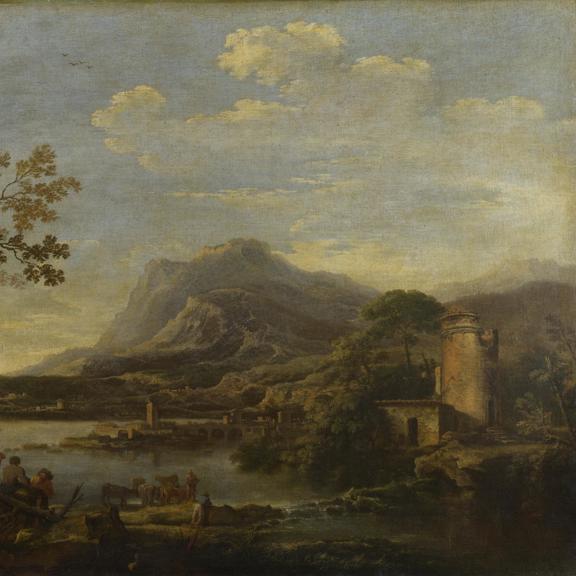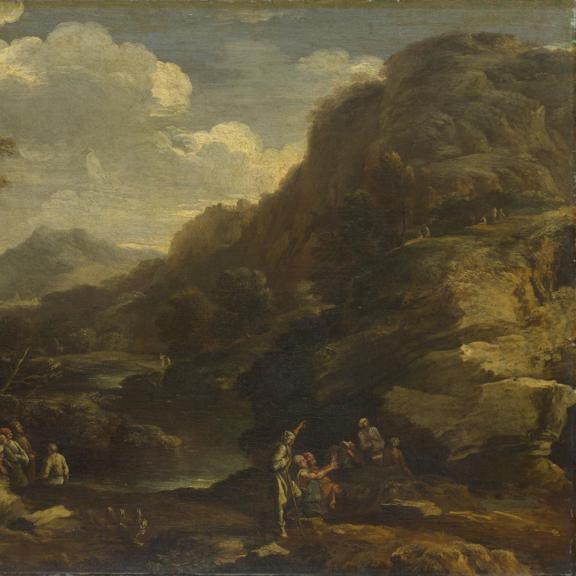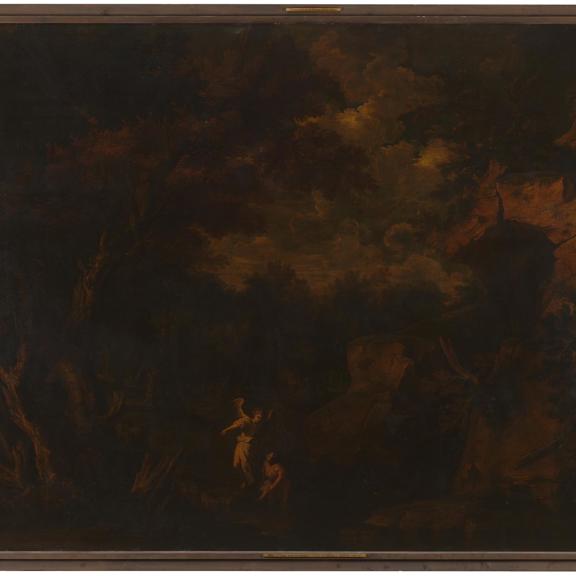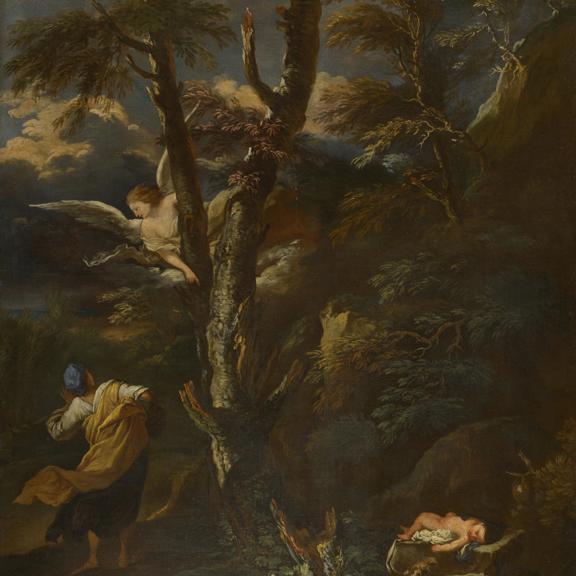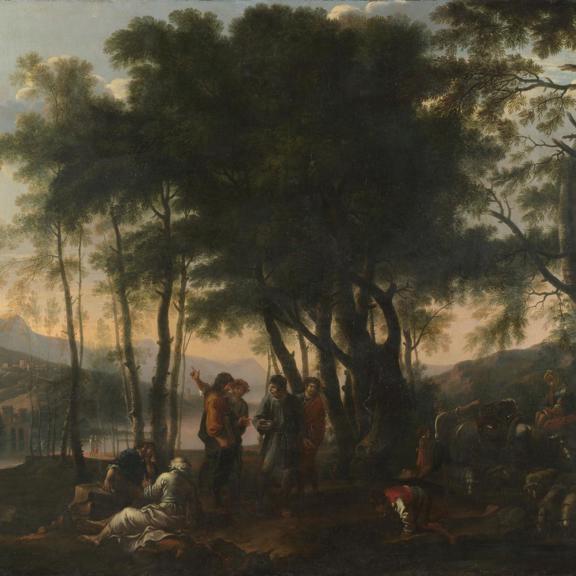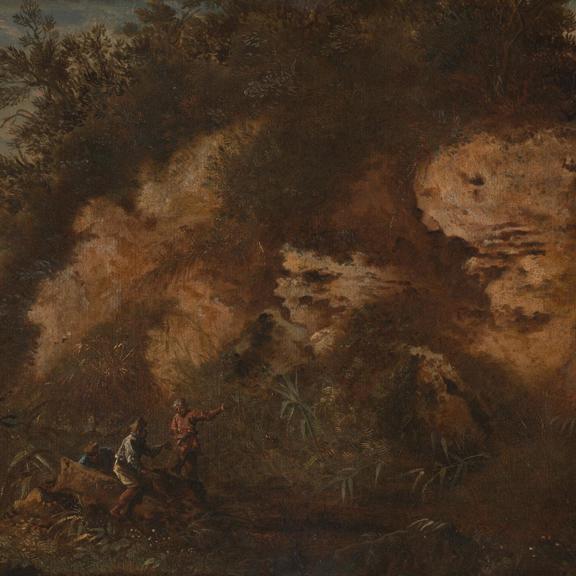Salvator Rosa, Self Portrait as Pascariello
| Full title | Self Portrait as Pascariello |
|---|---|
| Artist | Salvator Rosa |
| Artist dates | 1615 - 1673 |
| Date made | about 1645-9 |
| Medium and support | Oil on canvas |
| Dimensions | 115.5 × 94 cm |
| Acquisition credit | On loan from The Ramsbury Manor Foundation |
| Inventory number | L1283 |
| Location | Room 32 |
| Image copyright | On loan from The Ramsbury Manor Foundation, © The Ramsbury Manor Foundation |
| Collection | Main Collection |
Dramatically silhouetted against a plain background, Salvator Rosa presents himself in the guise of a witty and cunning Neapolitan servant called Pascariello; a stock character from contemporary theatre (‘commedia dell’arte’). Striking an assertive pose, Rosa is dressed almost entirely in black: he wears a fitted tunic with large buttons, a cape draped over his left shoulder and a black stocking cap covering his hair. A sword protrudes from beneath the fabric that falls behind him. His right hand rests confidently on his hip, its tattered glove loosely painted in shades of brown to suggest the texture of kid leather.
This is one of several self portraits painted by Rosa during his time in Florence in the 1640s. Though he assumes many different guises, Rosa is consistently identifiable from a contemporary account that describes him as being of medium height, with a swarthy complexion, dark and lively eyes, and thick, black, shoulder-length hair. In Florence, Rosa frequented sophisticated circles and established his own academy, known as the Accademia dei Percossi (Academy of the Stricken). This academy was attended by scientists, intellectuals, artists, poets and playwrights, all of whom came together to dine, recite poetry and satire, and regularly staged plays. Rosa often assumed the role of Pascariello and the 17th-century Florentine biographer Filippo Baldinucci records the artist giving a ‘portrait of himself, dressed in the costume of Pascariello, with torn gloves’ to his publisher-friend Girolamo Signoretti. The painting, almost certainly identifiable with this work, was later owned by Leopoldo de’ Medici, brother of the Grand Duke of Tuscany, who amassed a notable collection of artists’ self portraits in Florence.
In assuming the role of this well-known Neapolitan character, Rosa not only promoted his talent as an actor but also associated himself with his native city. Indeed, the naturalistic portraits he painted in Florence show the marked influence of Neapolitan painting, not least the impact of the Spanish artist Jusepe de Ribera, alongside whom Rosa had previously worked in Naples.
The National Gallery has endeavoured to make as many images of the collection as possible available for non-commercial use. However, an image of this painting is not available to download. This may be due to third party copyright restrictions.
If you require a license for commercial use of this image, please use the National Gallery Company's Online Picture Library or contact them using the following:
- Email: picture.library@nationalgallery.org.uk
- Telephone: +44 (0)20 7747 5994
- Fax: Fax +44 (0)20 7747 5999
More paintings by Salvator Rosa
